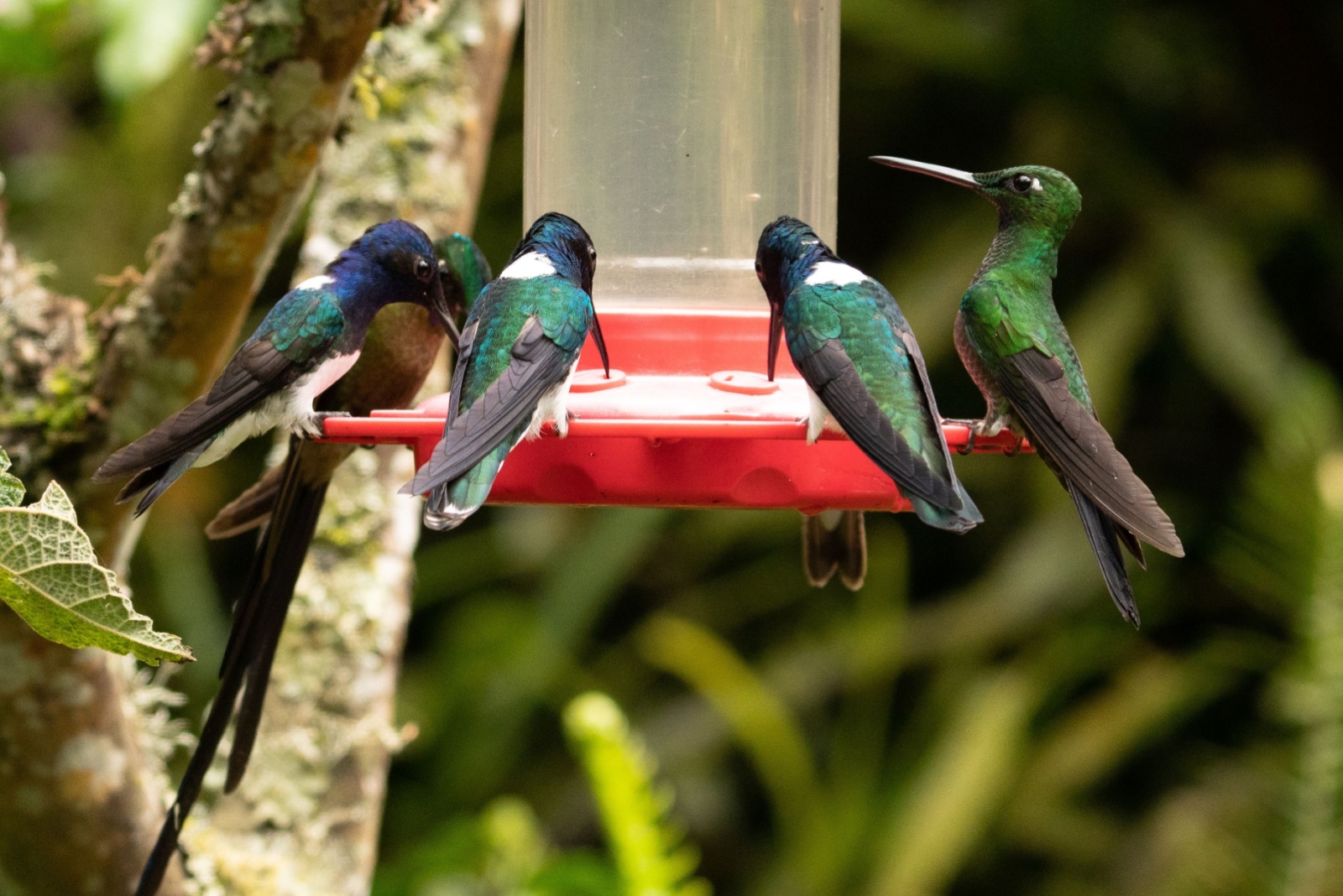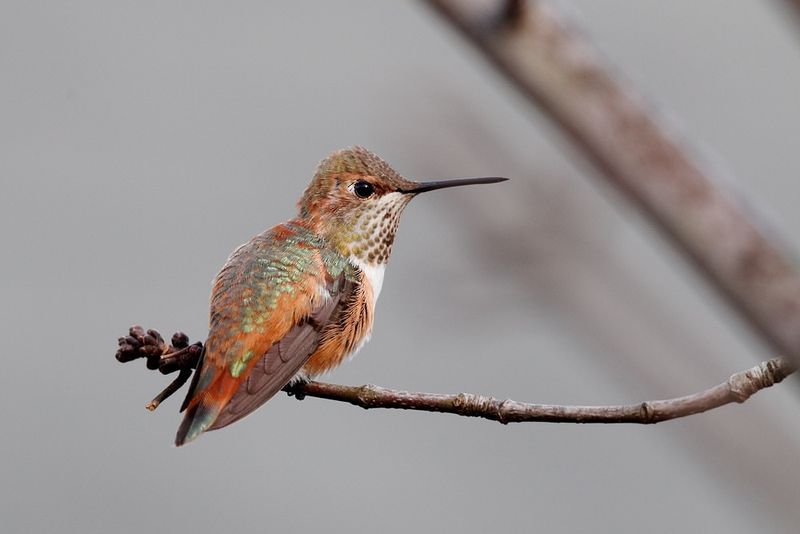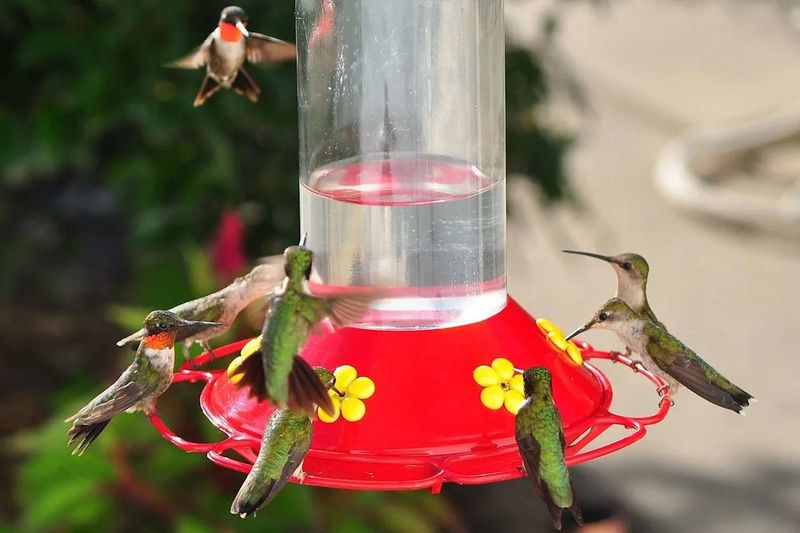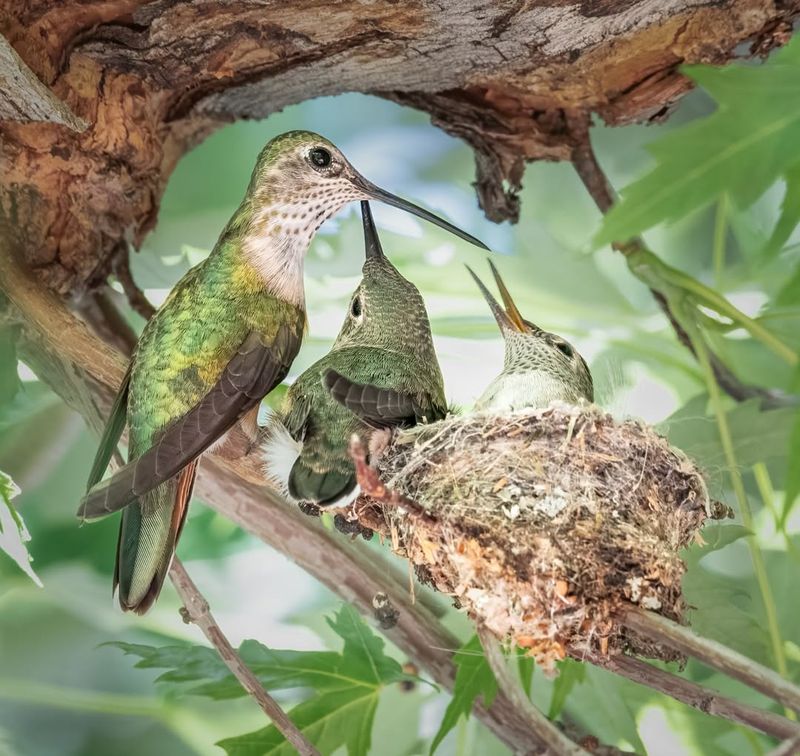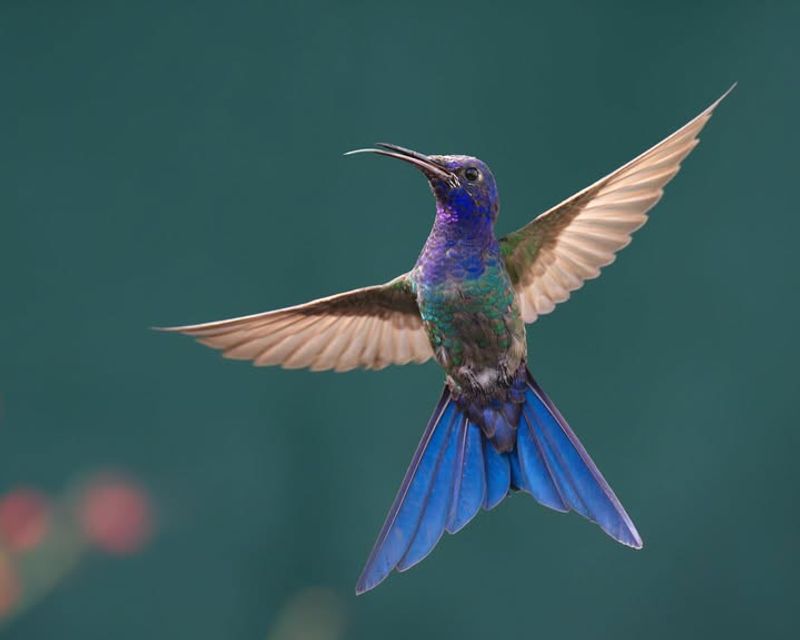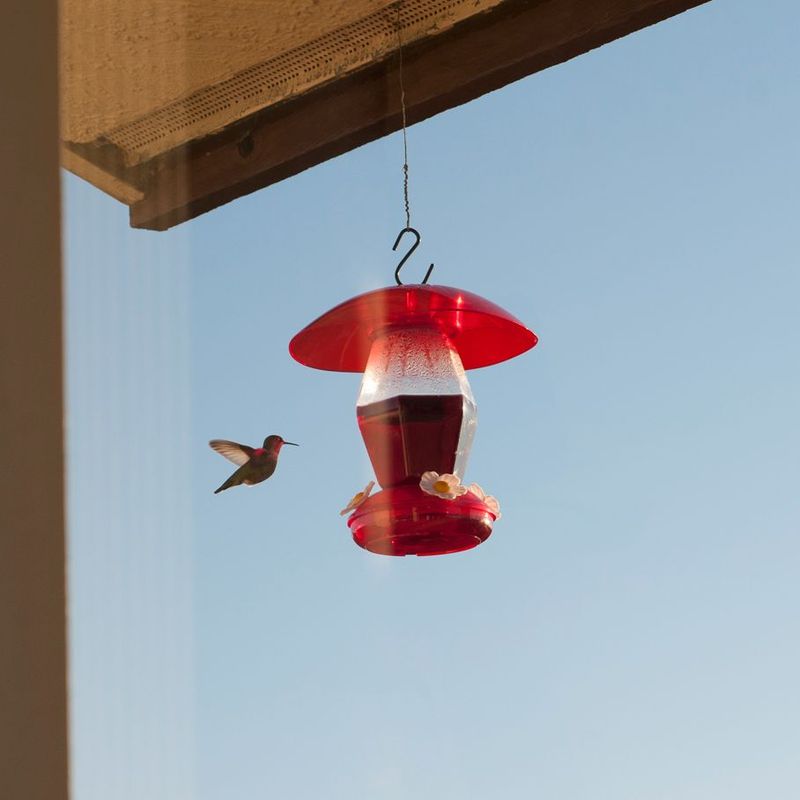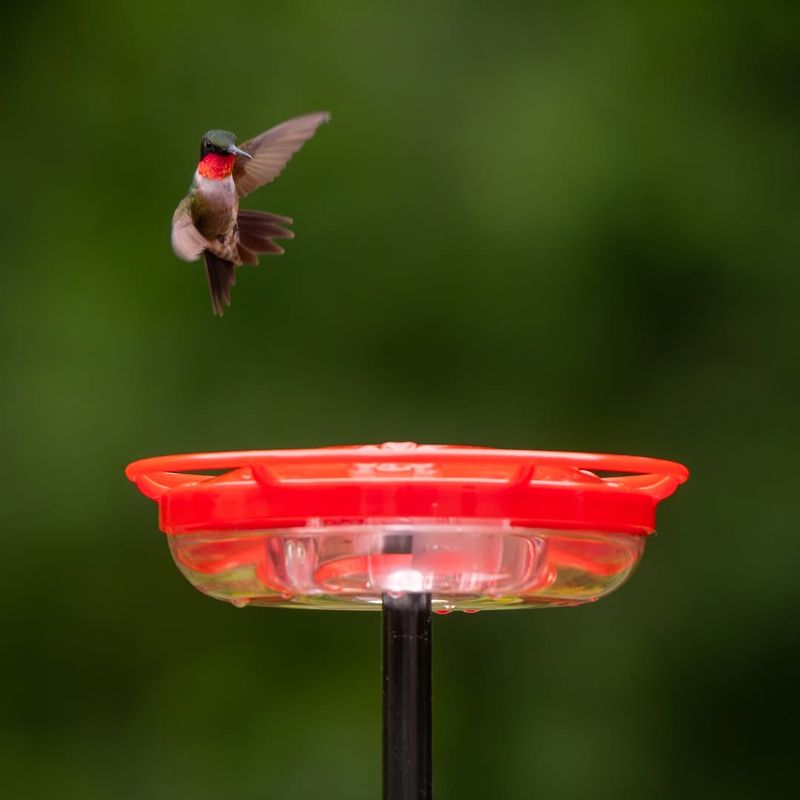Hummingbirds are amazing visitors to Colorado backyards, but knowing when to take down your feeders can be tricky. Removing them too early might leave migrating birds without food, while keeping them up too long could encourage birds to stay when they should head south.
Getting the timing right helps these tiny travelers complete their journey safely.
1. Wait Until Mid-October Before Removing Feeders
Most hummingbirds leave Colorado by late September, but stragglers often pass through in early October. Leaving your feeder up until mid-October ensures these late travelers have a reliable food source during their long journey south.
Some rufous hummingbirds migrate later than broad-tailed hummingbirds, so extra time helps them survive. Waiting a few extra weeks won’t hurt anything and might save a bird’s life. Colorado’s unpredictable fall weather makes this safety net even more important for exhausted migrants.
2. Watch For Decreased Feeder Activity
Pay attention to how often birds visit your feeder as autumn approaches. When you notice several days pass without any hummingbird sightings, migration is likely wrapping up in your area.
Keeping a simple log or mental note of visits helps you track patterns. If a full week goes by with zero activity, it’s probably safe to take the feeder down. Remember that one or two stragglers might still appear, so patience pays off when protecting these amazing creatures.
3. Consider Your Specific Elevation And Location
Colorado’s varied terrain means hummingbirds leave different areas at different times. Higher elevations typically see birds depart earlier, sometimes by late August, while lower areas might host hummingbirds into October.
Mountain communities above 8,000 feet should expect earlier departures than Front Range cities. If you live in the foothills or plains, your birds will likely stick around longer. Understanding your local environment helps you make smarter decisions about feeder timing and bird care.
4. Don’t Worry About Delaying Migration
A common myth suggests feeders trick hummingbirds into staying too long, but this simply isn’t true. Birds follow powerful internal clocks and natural instincts that tell them when to migrate south.
Decreasing daylight and hormonal changes trigger migration, not food availability. Your feeder actually provides crucial energy for their journey rather than keeping them from leaving. Feel confident that offering food helps rather than harms these remarkable little athletes during their incredible travels.
5. Clean And Store Feeders Properly After Removal
Once you remove your feeder, give it a thorough cleaning before storage. Use hot water and white vinegar or a mild bleach solution to remove all mold, bacteria, and old nectar residue.
Rinse everything completely and let it air dry before packing it away. Store feeders in a dry place where they won’t crack or get damaged during winter. Proper maintenance now means your feeder will be ready and safe when hummingbirds return next spring.
6. Mark Your Calendar For Next Spring
Before you forget, write down when you took your feeder down this year and when birds disappeared. This information becomes valuable for planning next season’s feeder setup.
Colorado hummingbirds typically return between late April and early May, depending on your location. Having your feeder ready by mid-April ensures early arrivals find food after their exhausting journey north. Creating a yearly schedule helps you become a better hummingbird host and supports these special backyard visitors season after season.

